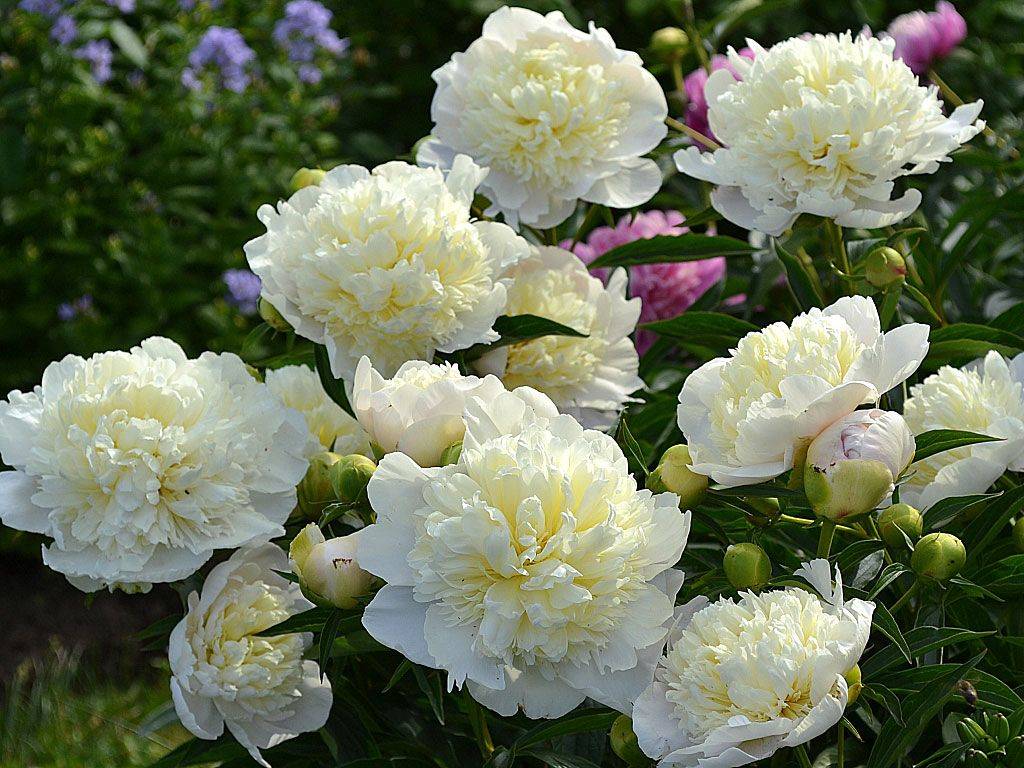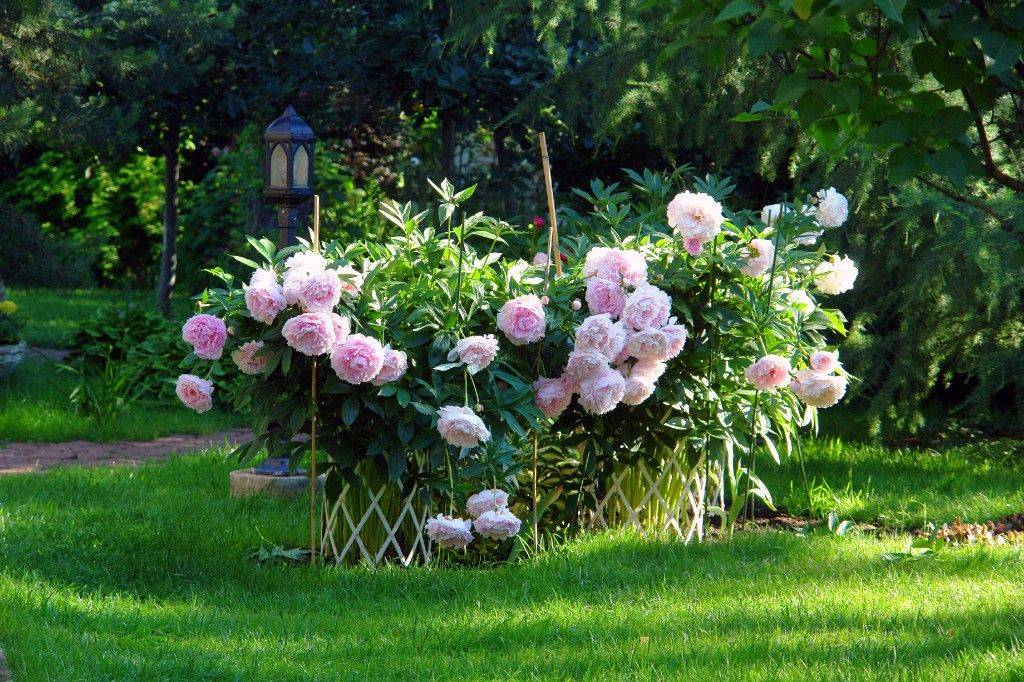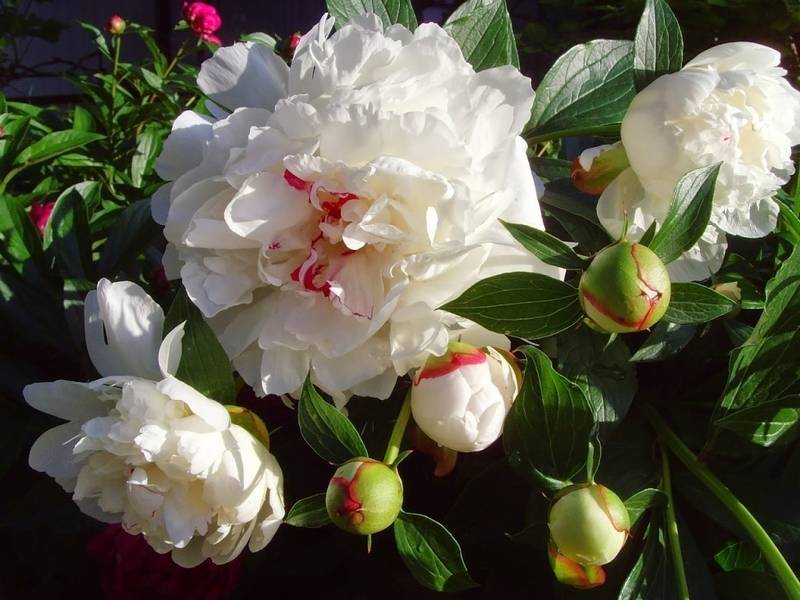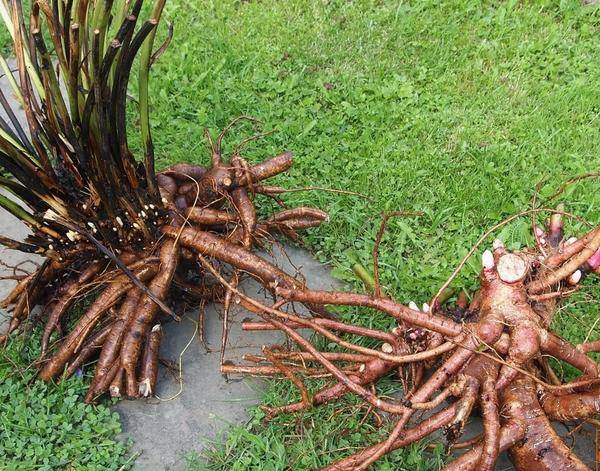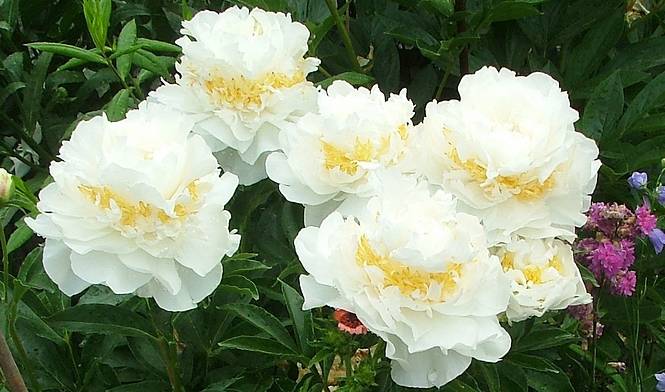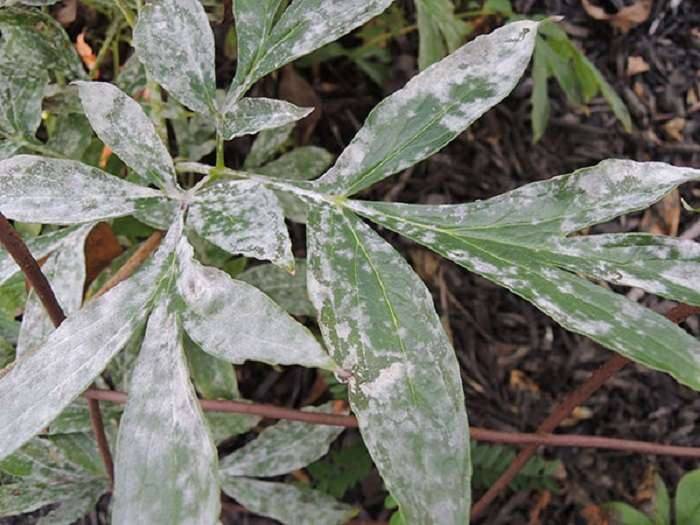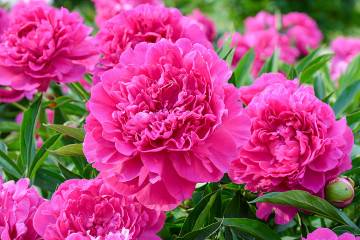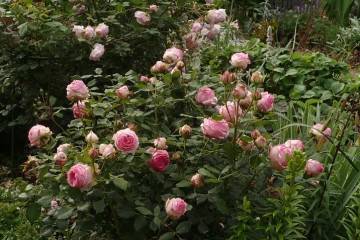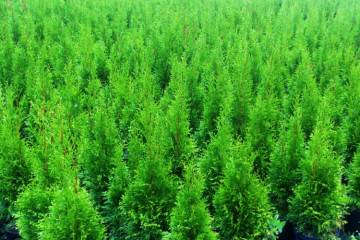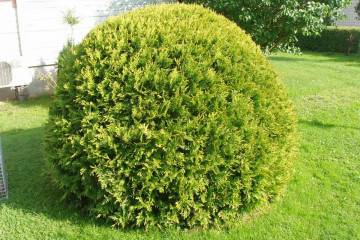White peonies - description and characteristics of the best varieties with a colored center
Content:
White peonies are beautiful ornamental plants that are actively used in landscape design. With their help, you can arrange flower beds, bouquets, borders. To succeed in growing these flowers, you need to provide them with proper care.
White peonies: short description, characteristics
Many growers choose exactly the varieties of White peonies. They look very festive and have a sophisticated scent. The disadvantage of such plants is the risk of burnout in the sun. Therefore, it is worth paying attention to the choice of a landing site.
Before planting a crop, it is worth studying its description. The bushes can reach 30-150 cm. They are decorated with large fluffy flowers and beautiful green leaves. The buds have a pleasant aroma.
Use in landscape design
The culture looks great on green lawns. If you want to create a harmonious composition, light buds will set off a dark background. Dark blue irises and crown lichnis are great additions. An excellent solution would be a red herbaceous peony.
Classification of tree peonies and varieties that are in greatest demand among gardeners
There are many types of white peonies, each of which has certain characteristics. Peony Apple Blossom, Miss America, Gardenia are considered interesting options.
Herbaceous
Herbaceous white peonies are very popular with gardeners. To succeed in growing them, you need proper care.
The most popular varieties are described below:
- White Swan. Terry inflorescences in the form of a ball are characteristic of this plant. The inner petals are narrower. The buds are quite dense and have a greenish color;
- Iceberg. This variety of white peony has double flowers and reaches 1 m. The petals are creamy;
- Ballerina. The flower is a hybrid form. The bud combines several shades - greenish, white, yellow. The bush reaches 80 cm;
- Victoria. This is a double flower of white-pink color. Inflorescences reach 18 cm in diameter. Bushes grow up to 1 m;
- Big Boy. The flowers are simple in shape with wide petals. There is a yellow center inside. Bushes grow up to 70 cm;
- Charles White. It is a milky-flowered plant. They are terry or semi-double. Bushes grow up to 120 cm;
- White Cap. This culture is characterized by original Japanese inflorescences. The outer petals are crimson in color, and the inner ones are milky white;
- Krinkled White.This species is characterized by large buds of a snow-white shade. The plant reaches 90 cm and has an average flowering period;
- Bowl of Cream. Peony has large white inflorescences. After opening, they become milky;
- Gladys Hodson. This is a double crop, the flower diameter of which reaches 20 cm. The plant is characterized by white petals with a pink tint;
- Carrara. This plant is characterized by a cup-shaped bud, which has a snow-white color. Bushes grow up to 80 cm;
- Adorable. This is a loosely doubled look, which is characterized by a pinkish tint. The flowers reach 15 cm in diameter;
- Alsace Lorraine. The bushes reach 1 m. The flowers are creamy and have a pleasant aroma. When unfolded, their diameter can reach 14 cm;
- Lallabay. This is a double peony, the size of the inflorescence of which reaches 18 cm. As the bud opens, the petals acquire a delicate pink color, and then turn white;
- Mathers Choice. The flowers are spherical and have thick double petals. Their diameter reaches 20 cm. In the center, the buds have a cream color;
- Fastiva Maxima. The plant is characterized by double flowers 20 cm in size. Red specks are present in the center;
- Gold Mine. This culture is characterized by a light yellow color. The flowers have a double structure and well-arranged petals;
- Treelike. This is a Chinese variety of peonies. In height, they can reach 1.5 m. Usually, the bushes are decorated with many inflorescences;
- Snow Tower. The culture reaches a height of 1.5 m. Its flowering begins only at the age of 6. Flowers have a double structure and white color;
- White Phoenix. The plant is characterized by large white flowers with a pinkish tinge. They appear earlier than in other cultures;
- White Jade. This peony has large inflorescences with semi-double flowers. The petals are distinguished by their snow-white color and yellow stamens;
- Maria. The variety is characterized by tall bushes 140 cm in size. The flowers are large, reaching 19 cm;
- Silk Veil. It is a compact crop that grows up to a maximum of 130 cm. It has large flowers with wavy petals.
Hybrid
This category includes hybrids that are somewhere between herbaceous and tree-like varieties.
The most common varieties of the group are:
- White Imperial. This culture has semi-double inflorescences with white petals. Its bloom begins in June;
- Cora Louise. The flowers are double and reach 18 cm. They have a white color with a lilac tint;
- Going Bananas. The name of this variety is translated as "banana obsession". It is characterized by lemon inflorescences and red streaks near the base of the petals;
- Singing in the rain It is a unique variety that changes its color from pink to orange;
- Canary Diamonds. It is an unusual watercolor variety that combines golden and fawn colors;
- Border Charm. This is a pale yellow peony that is dotted with red-orange blotches. The petals are deeply dissected;
- Yellow Crown. This variety is characterized by a pale yellow color. It is emphasized by orange stamens in the central part.
Growing a flower
To achieve good results in growing a crop, you need to carry out planting work correctly.
Planting by root cuttings
The ideal option is the propagation of peonies by root cuttings. For this, it is important to choose the right planting material and prepare it for planting in the ground.
Seat selection
Peonies require well-lit areas. It is advisable to plant them in a place protected from the wind. When choosing a soil, it is worth giving preference to loam with acidity parameters of 6-6.6.
How to prepare the soil and flower for planting
1 week before planting, it is worth digging holes 60 cm in size.There should be a distance of 70-100 cm between the bushes. The seedling should be soaked in water or growth stimulant solution.
Planting procedure step by step
The phased planting process looks like this:
- Lay a drainage layer 20 cm thick at the bottom of the pit. It should consist of coarse sand or gravel.
- Add top dressing. To do this, you need to take 100 g of lime and potassium sulfate, 200 g of superphosphate, 300 g of ash.
- Fill the pit with earth by mixing with compost.
- After a week, plant a peony and sprinkle it with soil.
- Lightly compact the ground.
Seed planting
The seed propagation method is used very rarely. It is usually used by breeders. Growing a crop from seeds is considered a long and laborious undertaking.
Care for white varieties
To succeed in growing a crop, it is worth providing it with quality care.
Watering and feeding
Peonies need rare but abundant watering. 2-3 buckets of water are poured under each plant. Thanks to this, it will be possible to moisten the soil to the very roots.
The timely introduction of mineral dressings is of no small importance. It is permissible to alternate them with organics.
Mulching and loosening
After watering, the ground must be covered with a mulch layer. For this, sawdust or foliage is used. This procedure helps to retain moisture in the soil.
After moistening, the soil must be loosened. This will help saturate the root system with oxygen and nutrients.
Preventive treatment
To avoid attacks of pests, the soil must be watered with a solution of potassium permanganate. Also, for preventive purposes, folk remedies are used - soap solution or tobacco infusion.
Blooming white peonies
This type of peonies is characterized by lush and abundant flowering, which is decorative.
A period of activity and rest
Peonies usually bloom in late May or June. In winter, plants enter a dormant period.
Care during and after flowering
During the flowering period, the planting needs to be moistened and fed. After flowering is complete, you need to remove all faded buds and apply fertilizers based on potassium and phosphorus.
What to do if it does not bloom
The lack of flowering is associated with:
- wrong landing depth;
- wrong choice of landing site;
- large age of the bush;
- frequent transplant.
Peonies after flowering
Peonies bloom ends in late May or early June. In this case, you need to get rid of wilted flowers.
Transfer
It is recommended to replant the bush in the fall. To do this, it must be dug in 25 cm from the root and gently loosened. Pull out of the ground and move to a new location.
Pruning
Peonies are completely pruned in late autumn with the onset of frost. If you need to do this earlier, you should leave 3-4 sheets. This will help the peony to set up replacement buds.
Preparing for winter
You need to prepare for winter by reducing the number of watering. After the onset of frost, the above-ground part of the bush should be cut to ground level.
Diseases, pests and ways to control them
Most often, peonies encounter gray rot. Root decay is characteristic of this pathology. Sometimes leaves and buds are affected. The affected areas should be trimmed and burned. Copper sulfate is used for prevention.
There are many varieties of white peonies that have excellent decorative properties.To succeed in growing them, you need to select a variety and ensure it is properly planted and cared for.
